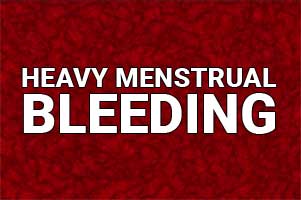- Home
- Editorial
- News
- Practice Guidelines
- Anesthesiology Guidelines
- Cancer Guidelines
- Cardiac Sciences Guidelines
- Critical Care Guidelines
- Dentistry Guidelines
- Dermatology Guidelines
- Diabetes and Endo Guidelines
- Diagnostics Guidelines
- ENT Guidelines
- Featured Practice Guidelines
- Gastroenterology Guidelines
- Geriatrics Guidelines
- Medicine Guidelines
- Nephrology Guidelines
- Neurosciences Guidelines
- Obs and Gynae Guidelines
- Ophthalmology Guidelines
- Orthopaedics Guidelines
- Paediatrics Guidelines
- Psychiatry Guidelines
- Pulmonology Guidelines
- Radiology Guidelines
- Surgery Guidelines
- Urology Guidelines
For heavy menstrual bleeding laparoscopic hysterectomy superior to endometrial ablation: Lancet

For heavy menstrual bleeding laparoscopic hysterectomy superior to endometrial ablation finds a Lancet study.
Laparoscopic supracervical hysterectomy has been found to be superior to endometrial ablation for the treatment of heavy menstrual bleeding in women. The keyhole-surgery technique, although a lengthier procedure, is more effective and is associated with a longer recovery and is similar to ablation in terms of complications. Also, women who underwent hysterectomy had less pelvic pain and pain during sex.
About one third of women seek treatment for Heavy menstrual bleeding which is when any of the following is present:
- Bleeding that lasts more than 7 days.
- Bleeding that soaks through one or more tampons or pads every hour for several hours in a row.
- Needing to wear more than one pad at a time to control menstrual flow.
- Needing to change pads or tampons during the night.
- Menstrual flow with blood clots that are as big as a quarter or larger.
These are the findings from a recent study published in The Lancet journal. The National Institute for Health and Care Excellence recommends hysterectomy or endometrial ablation as the surgical options for women with heavy menstrual bleeding. Hysterectomy although equally effective has more complications than the less invasive procedure endometrial ablation. Ablation ultimately leads to hysterectomy in 20% of the women.
Kevin Cooper, Department of Obstetrics and Gynaecology, Aberdeen Royal Infirmary, Aberdeen, UK, and colleagues compared laparoscopic supracervical hysterectomy with endometrial ablation in women seeking surgical treatment for heavy menstrual bleeding.
Laparoscopic supracervical hysterectomy is a minimally invasive procedure that uses laparoscopic (keyhole) that for the removal of a woman's uterus containing the endometrium. Endometrial ablation, on the other hand, is an outpatient medical procedure that involves the removal or destruction of the uterus' endometrial lining which is responsible for heavy periods.
This parallel-group, multicentre, open-label, randomized controlled trial was conducted across 31 hospitals in the UK. It involved 660 women younger than 50 years who were referred to a gynecologist for surgical treatment of heavy menstrual bleeding and who were eligible for endometrial ablation. They were randomly allocated in the ratio 1:1 (330 in each group) to either laparoscopic supracervical hysterectomy or second-generation endometrial ablation. The assignment was made by either an interactive voice response telephone system or an internet-based application.
616 (93%) of 660 women were operated on within the study period, 588 (95%) of whom received the allocated procedure and 28 (5%) of whom had an alternative surgery.
Also Read: Elagolix reduces menstrual bleeding in women with Fibroids
Key findings include:
- At 15 months after randomization, more women allocated to laparoscopic supracervical hysterectomy were satisfied with their operation compared with those in the endometrial ablation group (270 [97%] of 278 women vs 244 [87%] of 280 women.
- Women randomly assigned to laparoscopic supracervical hysterectomy were also more likely to have the best possible MMAS score of 100 than women assigned to endometrial ablation (180 [69%] of 262 women vs 146 [54%] of 268 women.
- 14 (5%) of 309 women in the laparoscopic supracervical hysterectomy group and 11 (4%) of 307 women in the endometrial ablation group had at least one serious adverse event.
Also Read: Heavy menstrual bleeding linked to high prevalence of bleeding disorders
"Laparoscopic supracervical hysterectomy is more effective than endometrial ablation, without any additional risk of complications, but this treatment takes longer and is associated with increased time to full recovery. With an increasing number of options available for women with heavy menstrual bleeding it is important to explore how these techniques and the attributes associated with them—for example, care delivery systems, wish for amenorrhoea, and willingness to have treatment in a formal operating theatre or hospital setting—can influence patient choice. Methods of reducing recovery times and associated costs after surgery, including enhanced recovery interventions and packages of care, need further evaluation, wrote the authors.
"Although endometrial ablation has been shown to be safe and acceptable under local anaesthetic, the reasons why most procedures are still undertaken in traditional theatre settings needs further investigation," they concluded.
To read the study in detail follow the link: https://doi.org/10.1016/S0140-6736(19)31790-8

Disclaimer: This site is primarily intended for healthcare professionals. Any content/information on this website does not replace the advice of medical and/or health professionals and should not be construed as medical/diagnostic advice/endorsement or prescription. Use of this site is subject to our terms of use, privacy policy, advertisement policy. © 2020 Minerva Medical Treatment Pvt Ltd